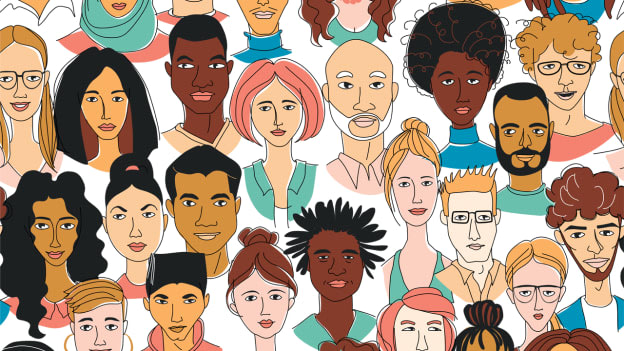Leading with cognitive diversity in the face of COVID-19

“What you really want is people to solve problems in diverse ways - to have a creative team, you want people who think of different types of ideas”
Scott Page, The Diversity Bonus
There exists an image of diversity that depicts that if you have people of both genders, different sexual orientation and diverse racial groups - one is bound to get a diversity of thought. However, the real world doesn’t seem to agree. According to a research by New York Times there are more CEOs named ‘John’ in North America than female CEOs. This shows the extent of progress that still needs to be made. In fact, a study by the World Economic Forum suggests that at the current rate we would achieve gender parity in pay only by the year 2234 (214 years more).
Even though ‘Diversity’ is highly discussed, it seems as though actions are rarely taken. One such lesser acted upon aspect of diversity is Cognitive Diversity.
The need for cognitive diversity
Cognitive Diversity is the differences in thinking style, perspective or information processing style. Gender, ethnicity or age do not necessarily have a role to play in it.
In 2017, Denise Young Smith, now the Ex Vice President of Diversity and Inclusion at Apple said, “There can be 12 white, blue-eyed, blond men in a room, and they’re going to be diverse, too, because they’re going to bring a different life experience and life perspective to the conversation.” Even though this statement had led to a lot of controversy, Ms. Smith was among the first to have endorsed the idea of ‘Cognitive Diversity’.
The current uncertainty and gloom in businesses due to COVID 19 has led to a need for thinking agility and thus, presence of cognitive diversity in businesses.
In an interview with Fast Company in 2014, Sallie Krawcheck the former CFO of Citigroup had said, “what could have averted the financial crisis [was] more diversity of perspective, of opinion.” This shows how important varied opinions are at the time of effective decision making in the face of crisis.
Cognitive diversity thus in these daunting times is too important to be side-lined.
How to lead with diversity in thought?
It is imperative organizations make the most of the rich differences that exist in the thinking style of people. It also requires equipping leaders with tools, practices and skills to honor, leverage and elevate cognitive diversity. Here are a few strategies to get started:
Looking beyond the obvious: One of the major reasons cognitive diversity does not receive the attention it deserves is that other diversity parameters are obvious to the naked eye. However, can anyone ever see perspectives and style of processing information? Masked vision is also another major reason. There is a saying “We recruit our own image”.
Usually organizations are run on the primary or dominant thinking style of their leader(s). This leads to favouring applicants that “fit the culture” of the organization or the ones that have a similar thought process. This leads to an unintentional contribution to a new Darwinian culture - Survival of similar.
Leaders should consciously work on creating cognitively diverse teams. They must intentionally seek out people who approach problems in a way different from them. This enables getting a spectrum of perspectives to navigate through the collapse on the business and health front.
Diversity + Inclusion = Better business outcomes: The need to make quick and effective business decisions is the need amidst this crisis. Such situations demand that all tools and resources are used to their full potential, this includes the diversity of people in decision making seats. According to a study by Deloitte, diversity is worthless without inclusivity.
Another research by them shows that a leader’s behaviour contributes to 70% of a feeling of belongingness among employees. The impact is stronger in minority groups.
Moreover, this feeling of inclusivity leads to an improved team performance (+17%), better decision-making quality (+20%) and collaboration (+29%). Candidates themselves look forward to a company that is rich in diversity and inclusivity. Leaders must be encouraged to take up initiatives that support inclusivity, or loss of some valuable brainpower is certain.
Creating a sense of appreciation: Leaders must inculcate a sense of appreciation of cognitive diversity in the organization. It is important that each employee understands, values and celebrates the differences. This will not only make them more accepting of each other’s views and perceptions but also give them a space to be their most unique selves.
Leveraging technology: Technology has emerged as a critical tool to maintain business continuity during lockdown. It plays an important tool in enhancing cognitive diversity as well. In a report by TATA Communications the idea of how AI could be married to the soft skills of humans was explored. It showed that AI has the potential to enhance human interaction. It can facilitate better team composition and communication especially when members are located in different parts of the world by translating multiple languages real time. Thus, use of AI bears maximum benefits when workers who interact possess cognitive diversity.
Given today’s ever-changing dynamic environment where ambiguity is present at every step of the way – Cognitive Diversity is all the more important, because you may never know where the next great idea may come from.















